Civil War Civilian Leaders
Civilian Leaders Overview
Thousands of Norwich citizens supported the Civil War both in word and deed. The intent of this section is to highlight the efforts and contributions of those civilians who heartily supported Norwich’s soldiers, but did not physically fight the war in combat. These civilians were from all walks of life. They were old, young, male, female, city leaders, businessmen, clergy and farmers.
Governor Buckingham was certainly both Norwich’s and Connecticut’s principal war time leader, however, he was supported by many staff, advisors, confidants and special envoys. Norwich’s Lafayette Foster was a member of the U.S. Senate at the outbreak of the war. He did not fight in combat either. However, he fought valiantly for the abolition of slavery, while maintaining a strong belief in the Constitution of the United States. Upon Abraham Lincoln’s death, he became the acting Vice-President of the United States.
Norwich’s local civilian leaders were also fully engaged in efforts to support the war. These leaders organized and hosted meetings that sparked Norwich’s citizens to contribute soldiers, supplies and moral support.
Throughout the war the women of Norwich contributed their time, support and love. In addition to physically sewing uniforms for the soldiers they provided food and other provisions. In September 1861, they formed the “Soldiers Aid Society”. This group provided a channel for sending needed provisions to the Norwich boys on the front lines.
Gov. William A. Buckingham & Staff
William A. Buckingham moved to Norwich in 1826 at the age of 22. During the 23 years prior to entering public service, he was a successful Norwich businessman. Buckingham first established a dry goods business and soon thereafter began to manufacture ingrain carpeting. By 1848, he organized the Hayward Rubber Company which produced rubber shoes and boots. During the period of 1849 to 1858 Buckingham served two terms as the Mayor of Norwich. He also served as Norwich town treasurer and was a member of the Norwich city council.
In 1858 he was elected as the 41st Governor of Connecticut. He became known as Connecticut’s War Governor due to his countless contributions to the Civil War effort.
Buckingham was unquestionably Connecticut’s and Norwich’s most prominent Civil War leader, however, he formed a multi-talented team of trusted advisors and aides to implement plans. Many of his most trusted staff were naturally from Norwich. Only a few of Governor Buckingham’s many staff from Norwich are discussed below.
Brigadier General William A. Aiken : Was Governor Buckingham’s chief aide during the Civil War and later became a prominent businessman in Norwich. William Aiken married Governor Buckingham’s daughter Eliza Coit Buckingham. Aiken’s contributions are detailed HERE.
Colonel Hugh Henry Osgood : Was a trusted member of Governor Buckingham’s inner circle of military staff. He served as Buckingham’s aide-de-camp throughout the entire Civil War. After the war Hugh Henry Osgood served as Norwich’s mayor during the period of 1875-1886.
Colonel Calvin Goddard Child : He served as Governor Buckingham’s secretary and military aide. After graduating from the Harvard Law School, he practiced law in Norwich for the three years prior to the beginning of the war.
Colonel Child was the son of Asa Child, a prominent Norwich attorney who served as the U.S. Attorney for the District of Connecticut and the grandson of a prominent Norwich attorney and former mayor of Norwich, Calvin Goddard.
John H. Almy : John Humphrey Almy of Norwich was commissioned as a Lieutenant Colonel by Governor Buckingham in 1862. He became an Assistant Quartermaster-general and was stationed in New York. Throughout his tenure, Colonel Almy devoted himself to those in need.
The photo, shown on the left, was taken in 1852 as he graduated from Amherst College, 9 years before his Civil War service began.
The excerpt from Info Source 2 provides a nice summary of the many contributions that Colonel Almy made during the Civil War :
“With noble efficiency throughout the war he discharged the duties of his responsible post, and with admirable executive ability saw that the sick and wounded were cared for, and that his office should afford such help and information as the throngs that visited it sought. His disbursements for the needy and sick were very large, and met by the expenditure in part of his own salary, and in part by the generous contributions of the sons of Connecticut.”
“The daily general business of his agency showed the versatile service and earnest devotion of the man. Among its duties were, the collection of back pay and bounties; correcting errors in passes and descriptive lists; obtaining of furloughs; reception of boxes of sanitary goods and the prompt shipment of the same to their several destinations; care of bag gage; procuration of regimental flags, guidons, together with musical instruments for various bands, and small arms for officers; discharges for sick and disabled soldiers, and responses to letters inquiring for the missing, sick, or dead.”
“At the end of four years his record showed that more than 200,000 soldiers of Connecticut and other States, 60,000 of them sick and wounded, had passed through his hands, all receiving transportation, many being otherwise assisted.”
“The Life of William A. Buckingham: The War Governor of Connecticut”, p 15, (1894), by Samuel Giles Buckingham
“The Norwich Memorial: The Annals of Norwich, New London County, Connecticut in the Great Rebellion of 1861-65,” 1873, p 175, by Malcom McGregor Dana
“William A. Buckingham, Civil War Governor of Connecticut, 1861 Letter,” engraving by J. C. Buttre
The complete list of sources may be found by clicking the “Bibliography” button, and, then typing “Buckingham & Staff” in the SEARCH box.
Lincoln Banner
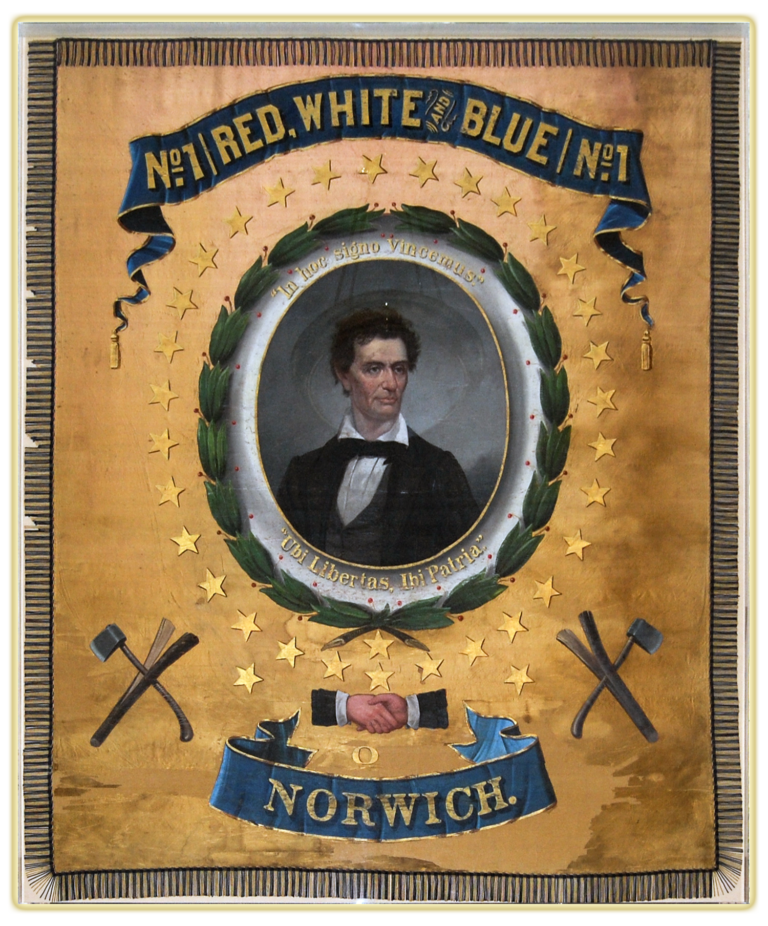
Displayed in City Hall
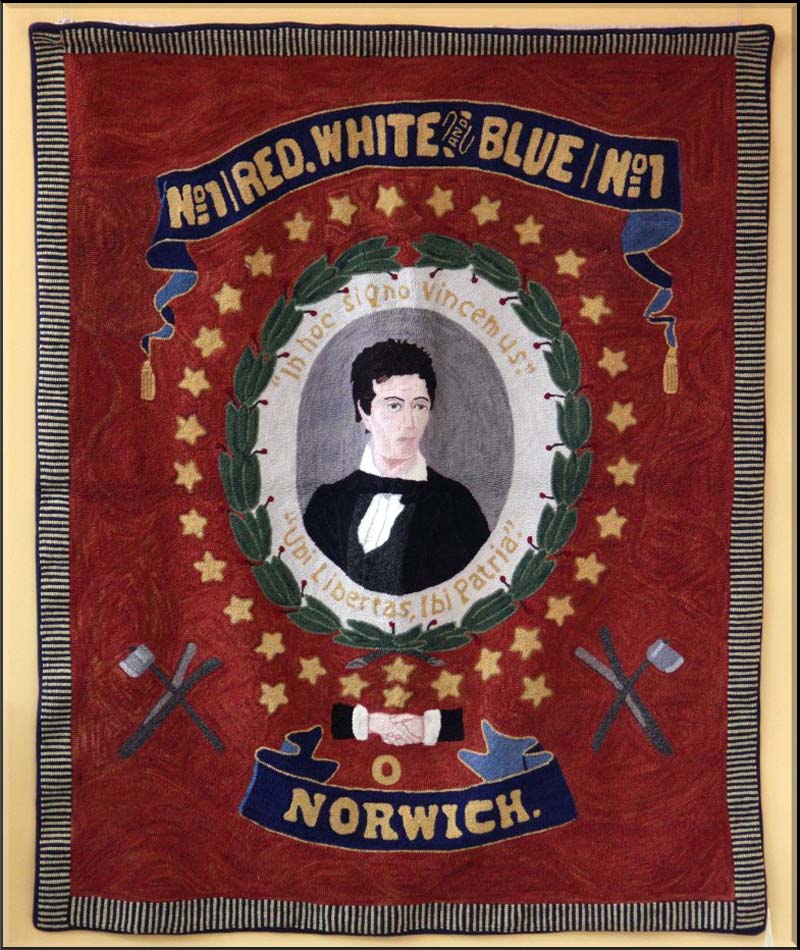
Displayed in Otis Library
A year before the beginning of the Civil War Abraham Lincoln visited Norwich. The Lincoln Banner, shown above on the left, flew in March 1860 outside the Wauregen Hotel. Lincoln came to campaign for his friend, William A. Buckingham, who was running for reelection as governor of Connecticut. Their friendship and collaboration on both political and anti-slavery matters proved to be a cornerstone during the Civil War years.
Lincoln was in Connecticut to also lend his support to the anti-slavery movement, even though he wasn’t even a Presidential candidate at that time. He spoke at Norwich, Bridgeport, Hartford, Meriden, New Haven, and New London.
“Lincoln Banner Brought Out the Best In Norwich,” Norwich Bulletin 02/12/2009
The complete list of sources may be found by clicking the “Bibliography” button, and, then typing “Lincoln banner” in the SEARCH box.
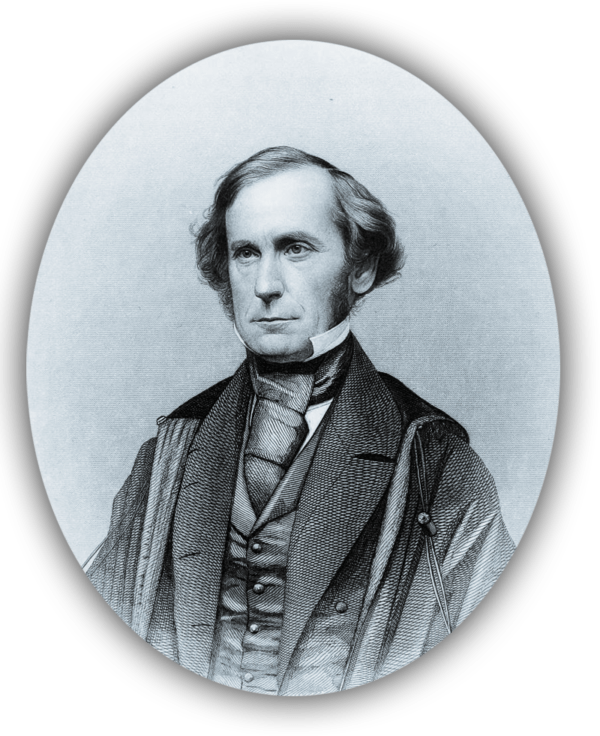
circa 1845
Senator Lafayette Foster
Lafayette Foster was a prominent lawyer, Connecticut Supreme Court judge, member of the Connecticut House of Representatives and U. S. Senator from Norwich. He worked closely with Governor William A. Buckingham, also from Norwich. Early in his political career Foster was twice the Mayor of Norwich. He served as Norwich’s mayor both before and after William A. Buckingham.
In the years leading up to the Civil War he fought hard to abolish slavery in an effective manner that promoted real change. In 1833, he was a member of Prudence Crandall’s defense team when she was tried in court over her attempt to educate African American girls. In 1854 Foster was a member of the Opposition Party. This party promoted anti-slavery principals. It gained favor in response to the expansion of slavery into new territories of the United States. The Democratic efforts to expand slavery into western territories, particularly, Kansas, led to organized political opposition, which coalesced in Congress as the “Opposition Party”.
According to Info Source 1 : “The debate over admitting Kansas to the Union, which lasted five years, established Foster as a voice of reason in an increasingly acrimonious discussion. Foster made it clear that he opposed slavery but acknowledge the rights of slave owners under the U.S. Constitution. His reasoned, logical dissection of the arguments and sound, sharp analysis that went to the heart of the matter brought Foster the reputation as a skillful debater who could feel strongly about a position yet make his argument in a calm, courteous manner.”
“Norwich and The Civil War,” 2015, p 16, by Patricia Staley
“History of Norwich, Connecticut: From Its Possession From the Indians, to the Year 1866,” p 632, by Francis Manwaring Caulkins; Engraving by J. C. Buttre
The complete list of sources may be found by clicking the “Bibliography” button, and, then typing “Lafayette” in the SEARCH box.

Colonel George L. Perkins: Special Envoy
Colonel Perkins was 72 years old at the outbreak of the Civil War. He had served in the War of 1812, almost 50 years earlier, as a paymaster for the U.S. Army. By the beginning of the Civil War, he was firmly established as one of Norwich’s leading citizens and was highly respected. At this point-in-time, he had already served as the treasurer of the Norwich & Worcester Railroad Company for 23 years.
Soon after William Aiken was tasked by Governor Buckingham to deliver a dispatch to President Lincoln, Colonel Perkins was given the honor and responsibility of acting as a special envoy for Governor William A. Buckingham. He was sent by Buckingham to Washington to deliver a dispatch to the Secretary of War, Simon Cameron.
The ensuing journey was filled with many unknowns and possible perils. However, Colonel Perkins successfully delivered the dispatch personally to the Secretary of War. The dispatch contained an offer from Governor Buckingham to procure a second regiment to support the war.
While in Washington, Colonel Perkins met with President Lincoln at the White House and subsequently began his trip home. The return journey to Norwich was also filled with danger. After he returned he sent a letter to Governor Buckingham that described the perils that he had overcome. Click HERE for a more detailed account.
Colonel George L. Perkins, of Norwich, demonstrated that even at an advanced age one can contribute to his community, state and nation. He lived to be 100 years old.
“The Norwich Memorial: The Annals of Norwich, New London County, Connecticut in the Great Rebellion of 1861-65,” 1873, pp 160-163, by Malcom McGregor Dana
“Souvenir Edition of the Norwich Evening Record, Norwich, The Rose of New England,” 1894, p 29, by Cleworth & Pullen
The complete list of sources may be found by clicking the “Bibliography” button, and, then typing “George L. Perkins” in the SEARCH box.
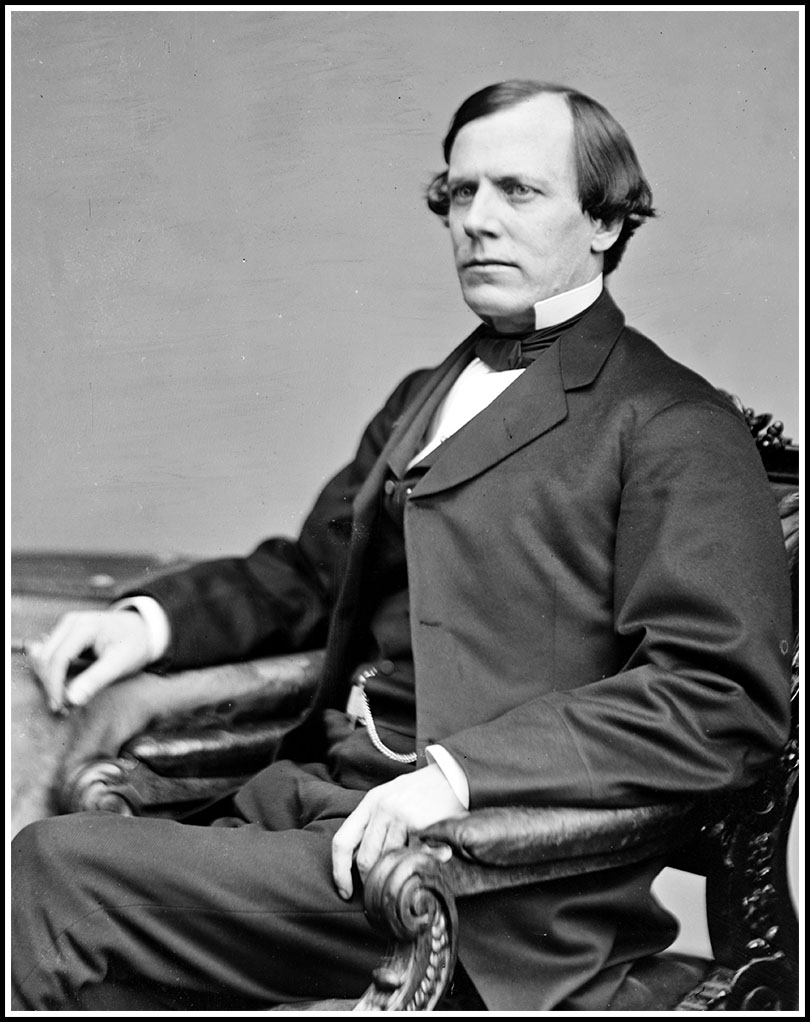
Meeting of Town Leaders at Apollo Hall
On April 18, 1861 Governor Buckingham received a telegram from the United States Secretary of War, Simon Cameron, assigning Connecticut a quota of one regiment for a ninety-day enlistment. The governor, who was at his home in Norwich, attended a hastily organized meeting whose purpose was to decide how Norwich would respond to the Secretary of War’s request for troops. They needed to both procure soldiers and to raise money to support them.
The meeting was held at Apollo Hall and it’s chairman was the Honorable Henry H. Starkweather. He was a prominent lawyer in Norwich, who had studied law under Lafayette Foster in previous years. He served as Norwich’s postmaster from 1861-1876.
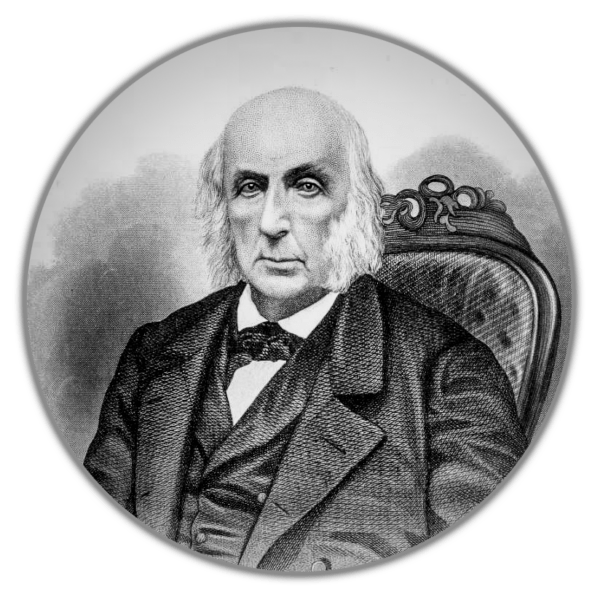
The participants included many past and present Norwich leaders, including former Mayor John Breed. Being 71 years old, Breed was not physically able to volunteer for front line duty, however, he contributed to the war effort through his inspirational words and manner. After approaching the platform, surrounded by those younger in age and stronger in physique, he spoke these inspirational words :
“I had not intended to speak a word today, but the time has come when our colors have been assailed, and these boys (alluding to those who volunteered for service), have got to see to it. I’m an old many, but I’ve never seen the time when I so wanted to be back again with the boys as during the last two or three days”.
Governor Buckingham then brought many in the audience to tears with his comments as he read communications from men offering their services and spoke of his pride in the way the “sons of Connecticut” responded to the crisis.
Shortly thereafter a “subscription paper” was created to raise money for prospective soldiers. At the top of this paper, the “Sinews of War” were written :
“We the undersigned, citizens of Norwich and vicinity, hereby agree to pay the sums affixed to our respective names, for the purpose of purchasing uniforms, or contributing in any other manner to the successful formation and enlistment of companies in this vicinity”.
Governor Buckingham’s name became the first on the list when he personally pledged $1,000 ($31,000 in today’s dollars). His action moved the townspeople in the audience to “make the building fairly shake”. Immediately thereafter many others pledged to support the coming war.
In addition to Governor Buckingham, many of Norwich prominent leaders attended this meeting. These men were too old to actually join the ranks of the combat soldiers, but, they lent their support in other ways. They included :
William P. Greene (66 years old) : Served as mayor of Norwich from 1842-1843. He was a prominent industrialist who developed many businesses in Norwich. The Norwich neighborhood, Greeneville, is named for him.
Lafayette S. Foster (55 years old) : Served as mayor of Norwich from 1851-1853. Became acting Vice-President of the United States after Abraham Lincoln’s death.
James A. Hovey (46 years old) : Served as mayor of Norwich from 1870-1871. Mr. Hovey was a judge and prominent lawyer in Norwich.
John Fox Slater (46 years old) : Was a successful operator of a woolen mill and a cotton mill. He donated a large sum of money to outfit the Norwich Free Academy.
Amos W. Prentice (45 years old) : Served as mayor of Norwich from 1858-1860. Mr. Prentice was President of the Norwich Savings Society.
John W. Stedman (41 years old) : Was a printer, educational advocate and banker. He published the Aurora newspaper.
James S. Carew (40 years old) : Served as mayor of Norwich during the early years of the war. He presided at the first town meeting where the citizens of Norwich discussed the coming war.
Henry Bill (37 years old) : Was a successful book publisher, State Senator, and bank president. Developed the Laurel Hill neighborhood in Norwich.
By the end of the day, it was reported that the leaders and businessmen of Norwich pledged over $20,000 ($620,000 in today’s dollars).
“The Norwich Memorial: The Annals of Norwich, New London County, Connecticut in the Great Rebellion of 1861-65,”1873, pp 19-21, 160-163, by Malcom McGregor Dana
“Souvenir Edition of the Norwich Evening Record, Norwich, The Rose of New England,” 1894, p 29, by Cleworth & Pullen
The complete list of sources may be found by clicking the “Bibliography” button, and, then typing “Apollo” in the SEARCH box.
Breed Hall
Norwich Meets in Breed Hall
After decades of political unrest over the issue of slavery, on April 12, 1861, the Confederate States of America, under the leadership of Jefferson Davis, fired upon upon the Union’s Fort Sumter in South Carolina. The Civil War officially began and Norwich immediately responded.
Two days after the town leader’s meeting at Apollo Hall, the first public meeting of all the citizens of Norwich was held to discuss the war in Breed Hall. The Honorable Mayor James S. Carew presided. The meeting was packed to capacity and the galleries were filled with ladies, who continued their sewing of the outfits for Captain Frank Chester’s company of soldiers. Meanwhile the offices on the floor below the hall were also occupied by others in the engaged in the same work.
*Place cursor over photo to enlarge
In the opening statements Mayor Carew said “ … this is in no sense a party meeting, but a meeting where every man could act who loved his country, and was willing to aid in its support”.
Many of Norwich’s elite attended the meeting. The mayor was supported by 12 representative citizen Vice-Presidents and 4 secretaries. After music was played by the band, a number of inspirational and motivational speeches followed. Each one of which was listened to with the closest attention, for this was the meeting in which Norwich citizens foreshadowed the course they would adopt in reference to supporting an administration to which many of them had not lent the support of their votes; and also what measures they would unite upon in prosecuting the war which had already begun.
After several speeches, George Pratt came forward and said, “The seceding states had rushed madly into war, but they had mistaken the men of the North, and would find a wall of fire”. Immediately thereafter the citizens of Norwich passed two resolutions :
1) That in view of the great and overwhelming dangers that now threaten the very existence of our nation, it is the duty of all good and loyal citizens, to lay aside, without any exception or reservation whatever, all party ties, party issues, and personal prejudices, and rallying beneath the flag of our country, to pledge our lives, our fortunes, and our sacred honor to the support of the Constitutional Government of these United States .
2) That we tender to the Governor of this State, and through him, to the President of the United States, our cordial sympathy and cooperation, and as an earnest of our sincerity, we give up to their service the flower of our youth, and the best blood of the good old town, which has never faltered in the perils of our country.
The Info Source sums up the results of this meeting with the following words :
“Never before had Norwich greater occasion to be proud of the patriotism of its citizens; while to see them rise above all partisan predilections, and stand together for the public weal, was in itself a sublime sight.”
“The Norwich Memorial: The Annals of Norwich, New London County, Connecticut in the Great Rebellion of 1861-65,” 1873, pp 21-22, by Malcom McGregor Dana
“Civil War Photos Shed Light on History,” 03/27/2011, by James Craven